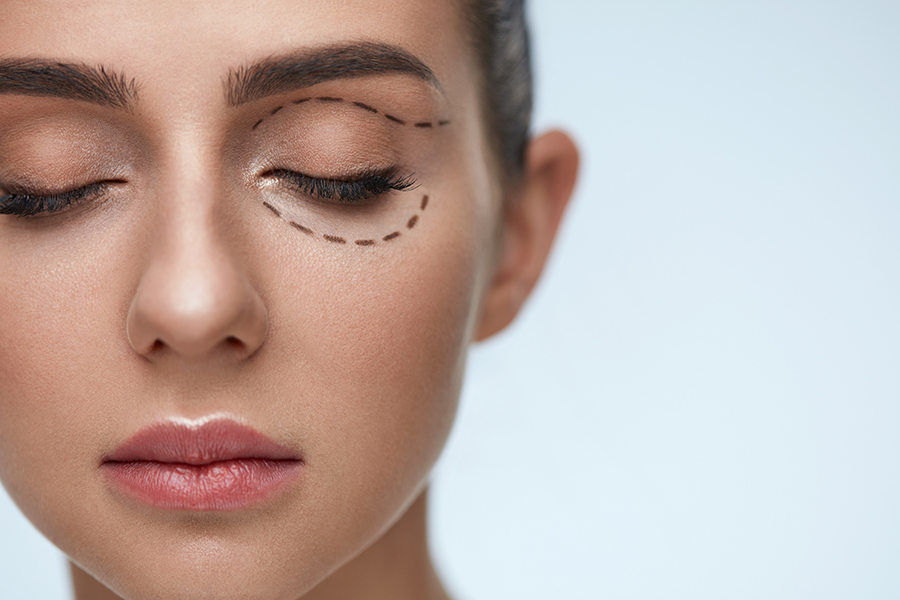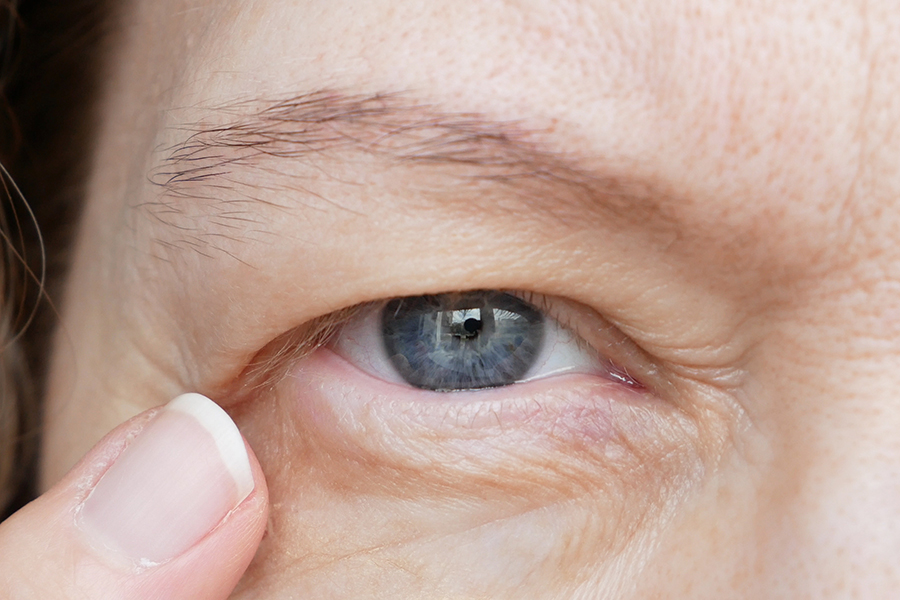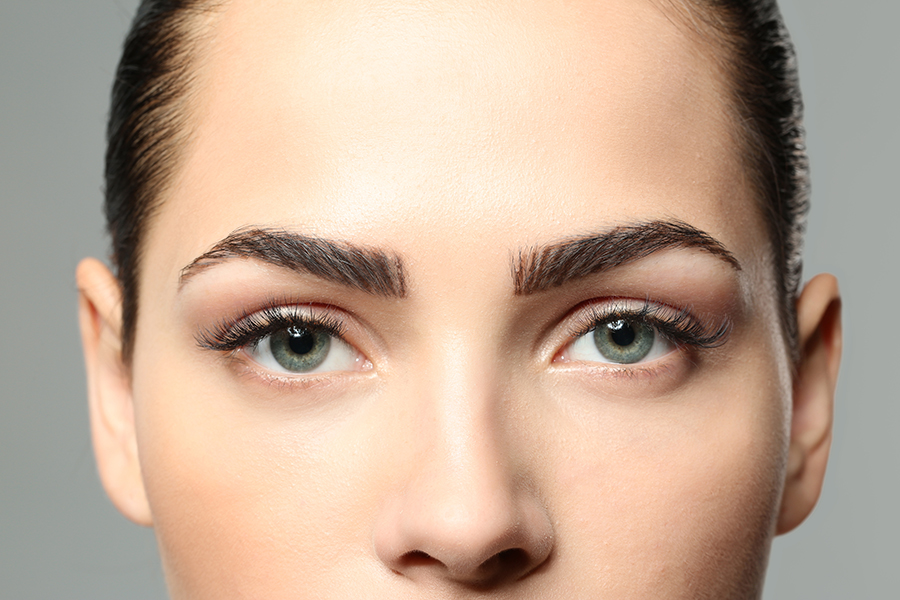Cosmetic Procedures
Eyelid Surgery in Chelmsford
Our eyelids play a vital role in eye health, protecting our eyes against dust, pollens, and other foreign elements.
An eyelid disorder can be painful, resulting in extreme discomfort and affecting your vision and appearance. The way your eyes look mainly depends upon the appearance of your eyelids. Eyelid problems are common, and in cases where eyelids are abnormal, ophthalmologists can help by performing eyelid surgery.
What Are the Different Types of Eyelid Surgery?
There are different types of eyelid surgeries suited for various eyelid anomalies.
Blepharoplasty, brow lift, and ptosis repair surgeries are the most common. However, blepharoplasty is the most frequently performed eyelid surgery.
Blepharoplasty in Chelmsford

What Is Blepharoplasty?
Blepharoplasty is a type of eyelid surgery that is performed for aesthetic and functional purposes. It is one of the most common aesthetic procedures performed in modern times to treat blepharitis, which refers to inflamed eyelids. The surgical procedure can be done on the upper and lower eyelids.
It involves the surgical removal of excess fat and skin from the eyelids, which may hinder normal vision and appear unpleasant. In upper eyelid blepharoplasty, eye surgeons remove fat pads and extra skin from the eyelid to enhance function and appearance.
In the lower eyelid blepharoplasty, extra skin and fat in the lower eyelid are removed to reduce fat bulges and wrinkles. In newer techniques, orbital fat is precisely removed and repositioned to enhance appearance.
The main aim of a lower lid blepharoplasty is to treat the redundant eye skin and correct the orbital fat malposition. After excision, the surgeon may use fat grafts or dermal fillers to manipulate the orbital fat pads.
Who Is a Candidate for Blepharoplasty?
Individuals with the following conditions make an ideal candidate for blepharoplasty.
Sagging Eyelids
Also known as dermatochalasis, sagging eyelids are common in old age. The prevalence of dermatochalasis in adults above 45 years is about 16%. The loose and redundant skin of the eyelid changes the natural contour of the eye and can impair vision.
Visual impairment due to sagging eyelids can even reduce the patients’ driving safety. Thus, dermatochalasis patients should get a blepharoplasty procedure done to improve function.
Drooping Eyelids
The drooping of the upper eyelids is known as ptosis. The condition can partially or completely block your normal vision, leading to a reduced quality of life. Ptosis can be present at birth or acquired later in life. It arises due to muscle weakness in the eyelid and is a common indication of blepharoplasty.
Bags Under Eyes
People with bags under their eyes may find them displeasing. Aging eyelids lead to prominent bags under the eyes, which can be corrected via blepharoplasty.
Puffy Eyes
A lower eyelid blepharoplasty (lift) can effectively reduce puffiness around the eyelids. Individuals dissatisfied by the puffiness and fat deposits in the eyelids can be selected for blepharoplasty.
Wrinkles in the Lower Eyelid
Having fine wrinkles in the lower eyelid makes you a candidate for blepharoplasty. Surgeons frequently use lower lid blepharoplasty to reposition malpositioned fat in the lower eyelid. This reduces the extra skin and wrinkles.
What Are the Benefits of Blepharoplasty?
Blepharoplasty improves visual quality in patients with dermatochalasis. The procedure imparts a fresher and younger look to the patients by enhancing the eye contour and reducing wrinkles. Patients can get rid of dark circles under the eyes.
Research suggests that blepharoplasty has significant benefits in increasing the visual field as well. The eyelid surgery improves the quality of life and decreases vision-related headaches. Lower lid blepharoplasty also improves the muscle tone of the lower eyelid.
How Much Does Blepharoplasty Cost in Chelmsford?
Blepharoplasty cost varies between healthcare facilities. On average, blepharoplasty may cost you between $3,000-$5,000. Unilateral (one eye) blepharoplasty costs may differ slightly from bilateral blepharoplasty costs, but depending on your unique situation, it may be significantly more expensive than average.
Ptosis Repair Surgery
Ptosis Repair is another type of eye surgery.
What Is a Ptosis Repair Surgery?

Drooping of the upper eyelid (ptosis) is common in children and adults. The prevalence of congenital ptosis (at birth) was found to be 7.9 per 1,00,000 patients. Ptosis repair surgery is adopted to correct droopy eyelids. The procedure is carried out under local anesthesia and usually requires only minor alterations to the lifting muscles of the eyelid (upper).
Surgeons can choose between internal and external approaches for the surgery. In the internal approach, the surgeon shortens the lid lifting muscles, whereas the muscles are repositioned in the external approach.
These procedures are recommended in ptosis patients who have strong levator muscles. The external approach to ptosis repair is made in local anesthesia, while the internal approach requires general anesthesia.
In the case of weak muscles, the eye surgeon surgically attaches the eyelid (upper) to the frontalis muscle (forehead muscles) in a process known as frontalis sling fixation. Research suggests that frontalis sling operation effectively improves the contour of the upper eyelid. It can effectively correct severe ptosis too.
Who Is a Candidate for Ptosis Repair Surgery?
Children born with abnormal drooping of the upper eyelid (congenital ptosis) make ideal candidates for ptosis repair. That is because the eye condition has significant psychosocial and functional impacts on the kid’s life.
Adults facing the following issues due to drooping of eyelids need a ptosis repair surgery:
Vision Issues
Ptosis can lead to vision changes and impairment. A lazy eye (amblyopia) is a condition where there is poor visual development in one or both eyes. According to a study, almost 18% of children with mild to moderate congenital ptosis suffer from lazy eyes.
Due to ptosis, adults usually experience decreased peripheral (side) and central vision. You are a likely candidate for ptosis repair surgery if your ability to distinguish shapes and identify objects from a given distance (visual acuity) is impaired due to ptosis.
Some patients opt for surgery due to extreme reading difficulties.
Eye Strain and Headache
Patients with ptosis put extra effort into keeping their eyes open. Many individuals achieve a chin-up position in an attempt to raise their eyebrows. The continuous extra pressure on the forehead muscles increases the tension leading to eye strain and headaches.
As per studies, tension-type headache is associated with ptosis and is a clear indication for ptosis repair surgery.
Several individuals approach an ophthalmologist for ptosis repair surgery because they find droopy eyelids unaesthetic.
What Are the Benefits of Ptosis Repair Surgery?
A successful surgery changes the way your eyes appear. Correction of the upper eyelid symmetry and contour improves vision. Patients are capable of seeing better.
Congenital ptosis, patients when treated timely, can prevent the development of amblyopia. A ptosis repair procedure relieves the extra pressure on the frontalis muscles and allows patients to regain the normal head position.
Patients note significant improvements in visual acuity and peripheral vision after surgery.
How Much Does Ptosis Repair Surgery Cost?
On average, unilateral ptosis repair surgery costs around $3,000. Ptosis repair cost for both eyes (bilateral) ranges up to and exceeding $5,000.
Brow Lift
A brow lift may be another option for you to consider.
What Is a Brow Lift?

Also known as forehead lift/rejuvenation, a brow lift is a surgical procedure to improve aesthetics. This cosmetic surgery efficiently enhances the appearance of your eyebrows and forehead. An eye surgeon brings changes to the appearance by raising the forehead and brow skin. When you are seen for a consultation, our oculoplastic surgeon will determine whether or not you are a candidate for this procedure.
Cosmetic Procedure FAQs
The following are some frequently asked questions related to eyelid surgeries we encounter daily.

